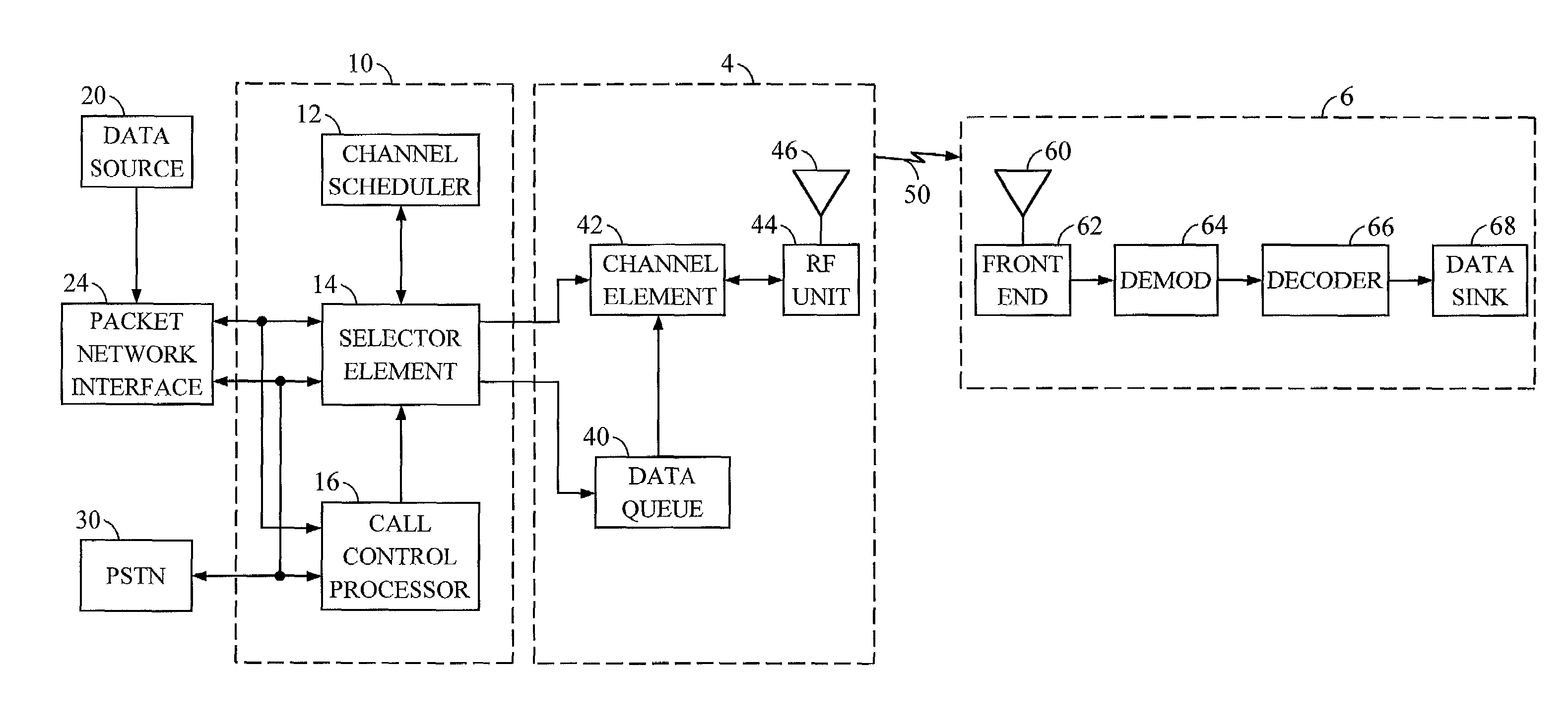System for allocating resources in a communication system
a communication system and resource allocation technology, applied in the field of communication systems, can solve the problems of affecting the limited bandwidth of the communication node in such systems, and the inability to serve certain subscribers, so as to enhance the overall data throughput of the common node and the rate of higher rate
- Summary
- Abstract
- Description
- Claims
- Application Information
AI Technical Summary
Benefits of technology
Problems solved by technology
Method used
Image
Examples
second embodiment
[0064]FIGS. 7A through 7D show a flow diagram illustrating the logic performed at the step 110 for selecting a queue for transmission to an associated remote station 6. In this embodiment, it is assumed that each base station 4 periodically transmits a control signal to all associated remote stations 6 having a fixed duration (such as eight to sixteen time slots). According to an embodiment, the base station 4 transmits this control signal once every 400 msec. During this control transmission, no data from any data queue 40 (FIG. 2) may be transmitted to an associated remote station 6. An objective of the embodiment shown at FIGS. 7A and 7B is to select only those data queues which may completely transmit for a service interval having a length determined at step 108 before the beginning of the next control signal transmission.
[0065]Steps 499 through 503 filter all of the queues to determine which queues are candidates for completion before the beginning of the next control signal tr...
third embodiment
[0067]FIGS. 8A and 8B show a flow diagram illustrating the logic executed at step 110 at FIG. 3 for selecting a queue for transmission. In this embodiment, subscribers of select remote units 6 are guaranteed a minimum average rate of data transmission. For each such premium remote unit, the channel scheduler 12 maintains a timer which alerts the channel scheduler 12 to schedule a transmission to its premium queue, regardless of the weights associated with the remaining queues. The time interval for the particular timer is determined based upon the average data rates guaranteed to the customer, the service interval assigned to that data queue at step 108 (see center column of Table 1), and any instantaneous data rate for receiving data determined at step 106. Thus, the time interval associated with the premium queue timer is dynamic with respect to these values. According to an embodiment, the timer interval is determined whenever the timer is reset as follows:
[0068]
Tj =Data_Size (Lj...
PUM
 Login to View More
Login to View More Abstract
Description
Claims
Application Information
 Login to View More
Login to View More - R&D
- Intellectual Property
- Life Sciences
- Materials
- Tech Scout
- Unparalleled Data Quality
- Higher Quality Content
- 60% Fewer Hallucinations
Browse by: Latest US Patents, China's latest patents, Technical Efficacy Thesaurus, Application Domain, Technology Topic, Popular Technical Reports.
© 2025 PatSnap. All rights reserved.Legal|Privacy policy|Modern Slavery Act Transparency Statement|Sitemap|About US| Contact US: help@patsnap.com



